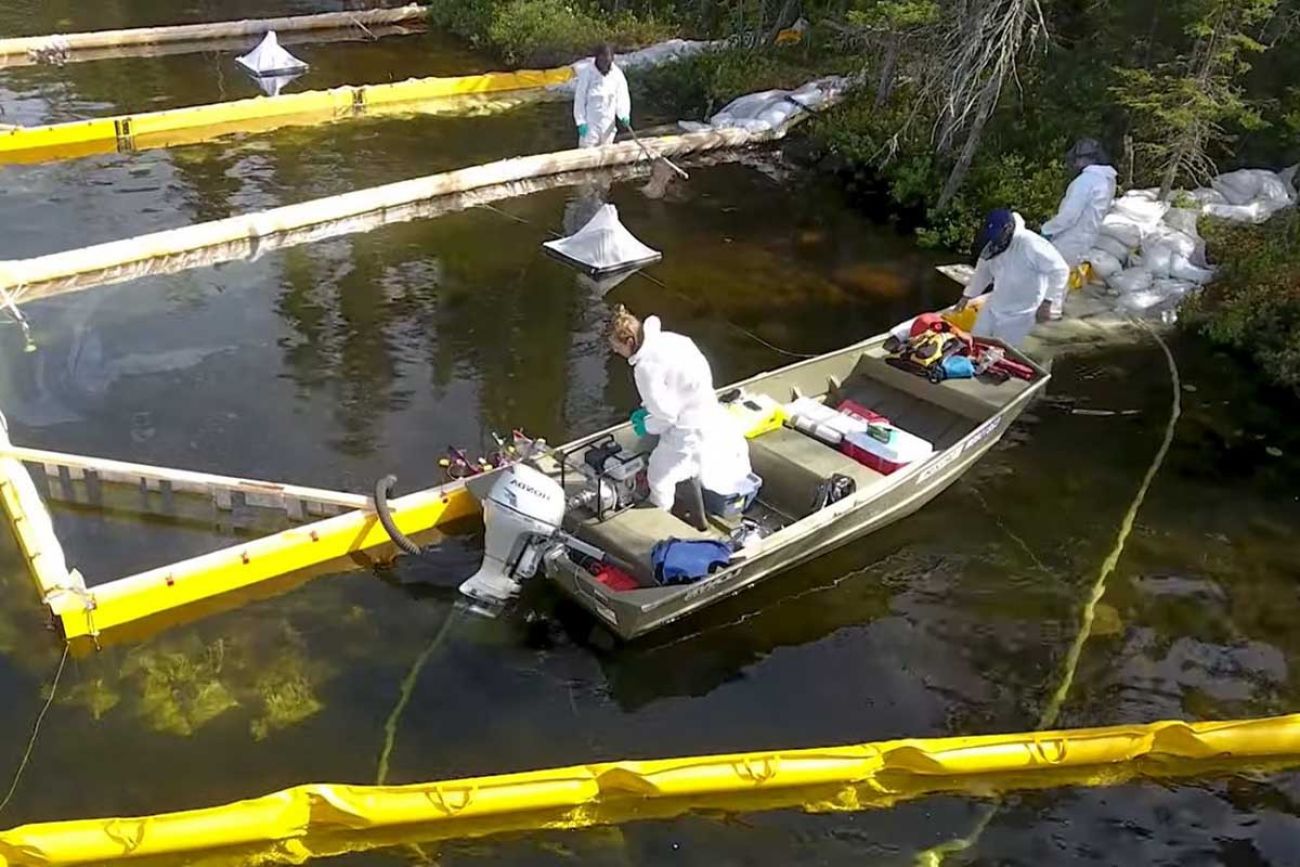Should Michigan, other states let nature clean up oil spills?

Natural populations of oil-degrading bacteria could help to clean up freshwater rivers and lakes after spills from pipelines and trains, researchers have found after experiments that simulated spills in a Canadian lake.
Vince Palace, who led the work at the International Institute for Sustainable Development’s Experimental Lakes Area in western Ontario, said the methods currently in use for cleaning up spills in rivers and lakes – mostly digging up and dumping contaminated soil – are not particularly effective. They only recover around 20 percent to 40 percent of the oil, and the physical damage to shorelines and streambeds can be worse than the effects of the spill itself, taking as long as a decade to recover.
This article is part of The Great Lakes News Collaborative, which includes Bridge Michigan, Circle of Blue, Great Lakes Now at Detroit Public Television, and Michigan Radio. It unites newsroom resources to report on the most pressing threats to the Great Lakes and drinking water supplies, including pollution, climate change, and aging infrastructure. The independent journalism is supported by the Charles Stewart Mott Foundation.
Related:
- Health officials: Climate change threat to Michigan. But few make it priority.
- Enbridge ordered to retrieve 15,000-lb. anchor from Straits of Mackinac
- With dam removal on hold, Traverse City residents face a hefty repair tab
Palace and his colleagues wanted to see if leaving the oil in place to be cleaned up by natural processes like bacteria might be a practical alternative.
“We know that in the marine environment there are bacteria that can degrade oil,” said Palace. “We wanted to know if naïve freshwater systems have that same capacity.”
The researchers created enclosures along the shore of one of the experimental lakes and dumped either conventional crude oil or the diluted bitumen that comes from Canada’s oil sands to simulate a spill. After 72 hours, they cleaned it up as best they could, then examined what happened to the residual oil over the course of the summer and into the winter.
The team found that after the spill, the composition of the bacterial community in the soil and water shifted dramatically. Rare types of bacteria, which had barely been present before, suddenly became the most common – and most of them had the capacity to degrade oil by using it as a source of food, suggesting a natural recovery could be a potential solution to spills in places like the Great Lakes, which are criss-crossed by pipelines and home to several refineries.
Currently, the Enbridge Inc. Line 5 pipeline under the Straits of Mackinac and Line 3 pipeline cutting through Minnesota and Wisconsin are the sources of controversy as residents and activists worry over the potential ramifications of an oil spill from either pipeline.
It is not yet clear, however, what effect such a drastic change in the make-up of the bacterial community might have on the wider ecosystem.
Zhanfei Liu, a chemist at the University of Texas at Austin who studied the response of bacterial communities in the Gulf of Mexico to the Deepwater Horizon oil spill, said he was not surprised to see a surge in oil-degrading bacteria in freshwater ecosystems. Though people tend to think that the microbial community in the Gulf of Mexico, with its thousands of natural oil seeps, is particularly adapted to deal with oil, Liu says that is a misconception – that capacity is present in ecosystems everywhere.
“Mother Nature is ready to act,” he said. “If you spill oil anywhere, you’re going to see oil degraders take off.”
The next step for Palace and his team is to do some more specific experiments on how, exactly, the bacteria break down the oil, whether they react differently to the two types of oils, and how fast they work. That will help determine whether leaving most of the job of cleaning up to bacteria is a viable solution.
The biggest hurdle, he said, is public perception: people just don’t like the idea of leaving nature to clean up our messes. While Palace is not yet endorsing leaving spill clean-up to the bacteria, he hopes this work can help to address some of those concerns.
“We’re trying to provide the scientific data that can tell us whether this is a valid approach,” said Palace. “We’ve seen enough so far to say it’s at least worth evaluating further.”
Michigan Environment Watch
Michigan Environment Watch examines how public policy, industry, and other factors interact with the state’s trove of natural resources.
- See full coverage
- Subscribe
- Share tips and questions with Bridge environment reporter Kelly House
Michigan Environment Watch is made possible by generous financial support from:
Our generous Environment Watch underwriters encourage Bridge Michigan readers to also support civic journalism by becoming Bridge members. Please consider joining today.
See what new members are saying about why they donated to Bridge Michigan:
- “In order for this information to be accurate and unbiased it must be underwritten by its readers, not by special interests.” - Larry S.
- “Not many other media sources report on the topics Bridge does.” - Susan B.
- “Your journalism is outstanding and rare these days.” - Mark S.
If you want to ensure the future of nonpartisan, nonprofit Michigan journalism, please become a member today. You, too, will be asked why you donated and maybe we'll feature your quote next time!






